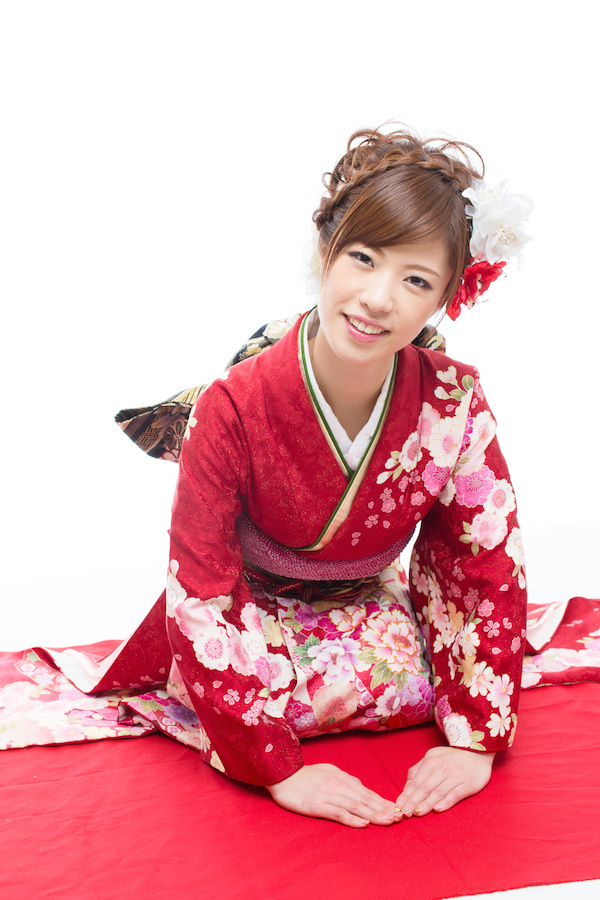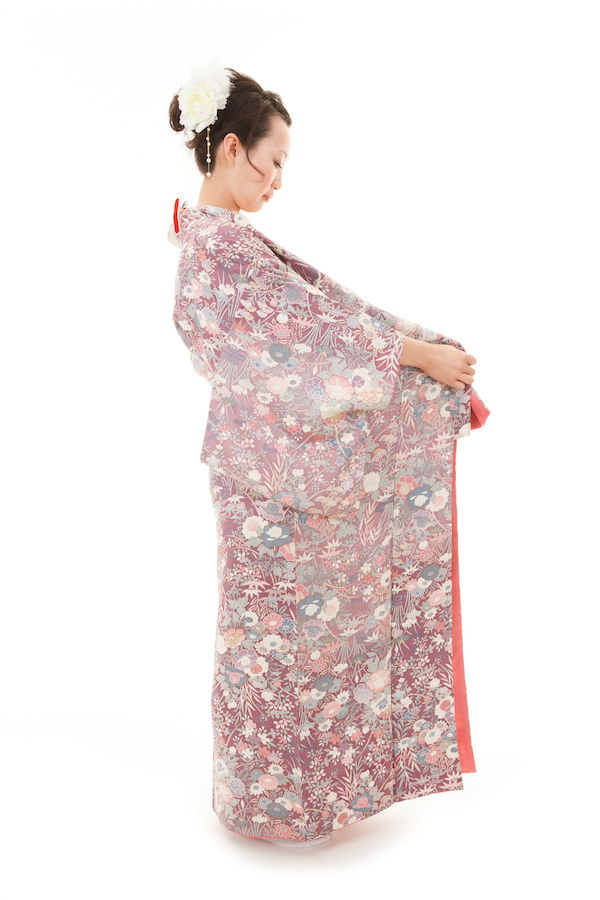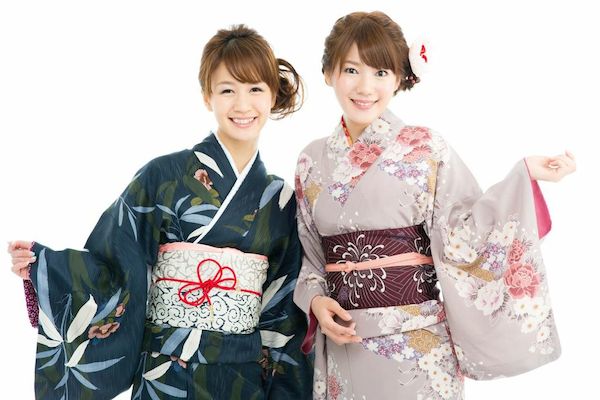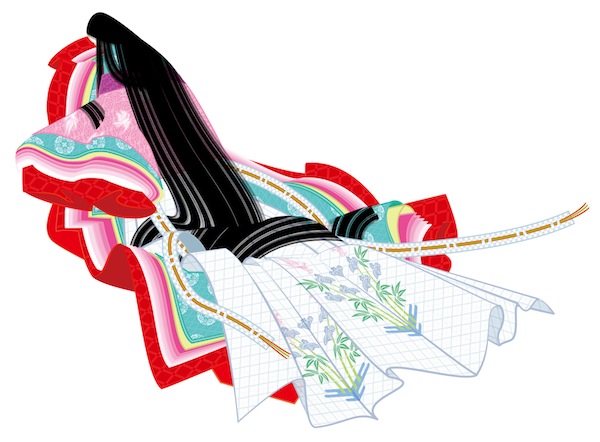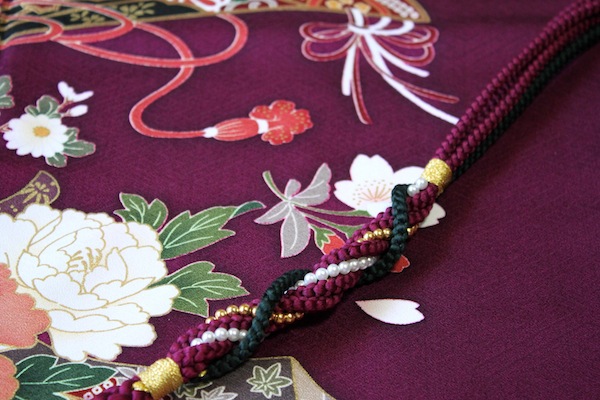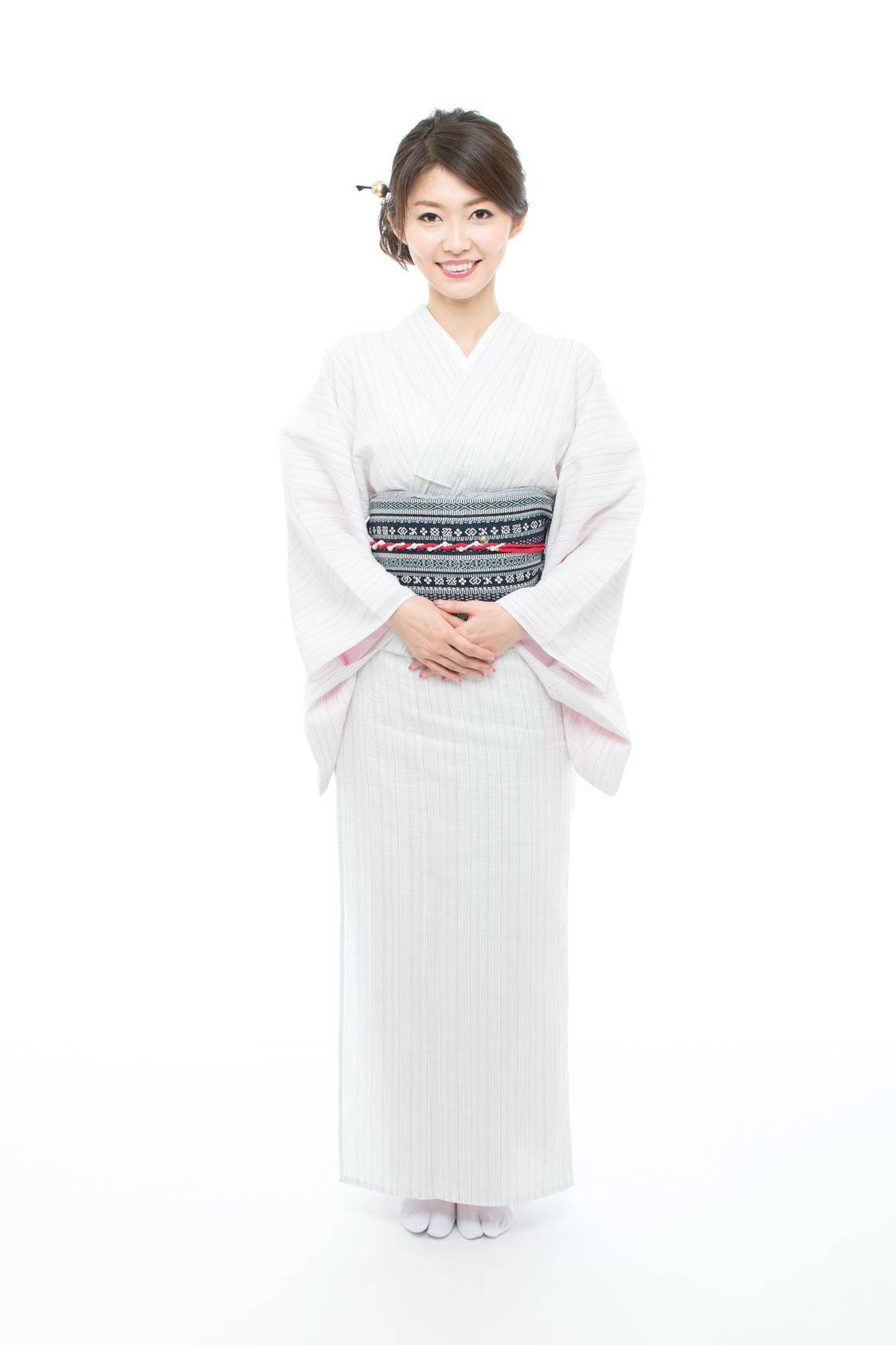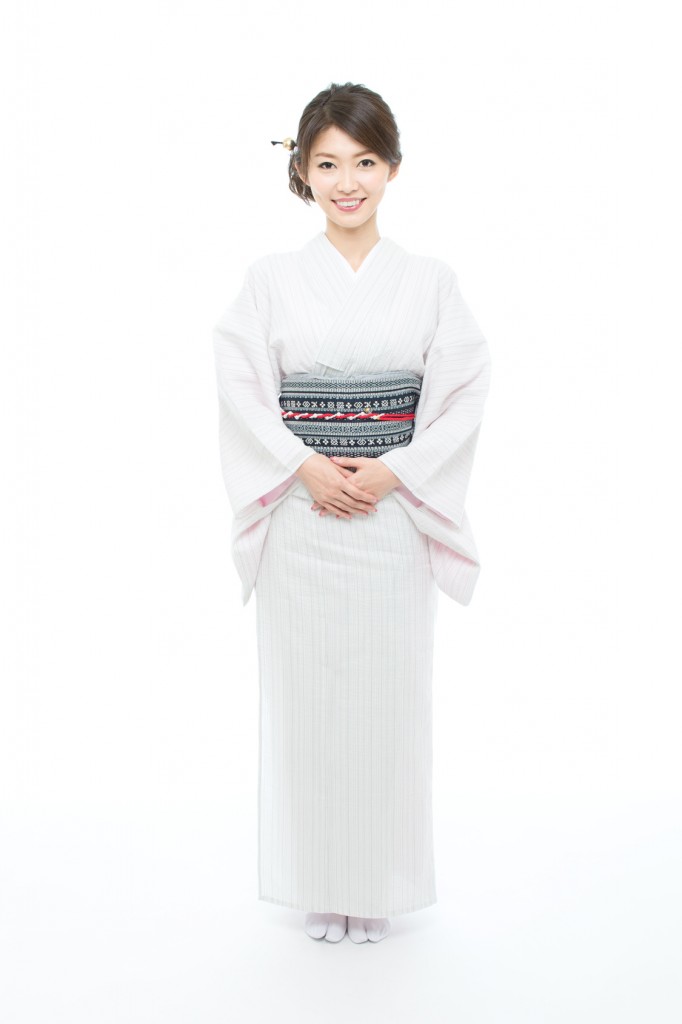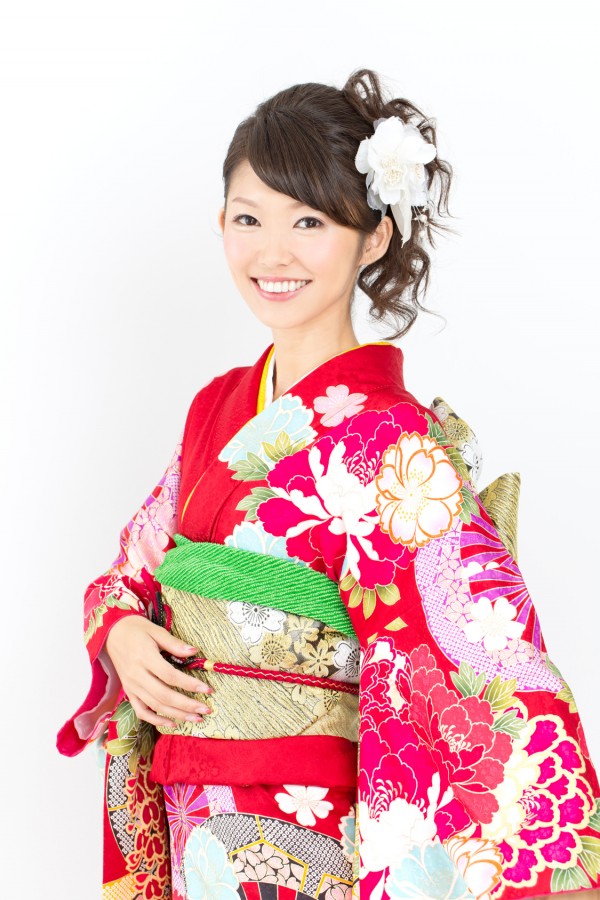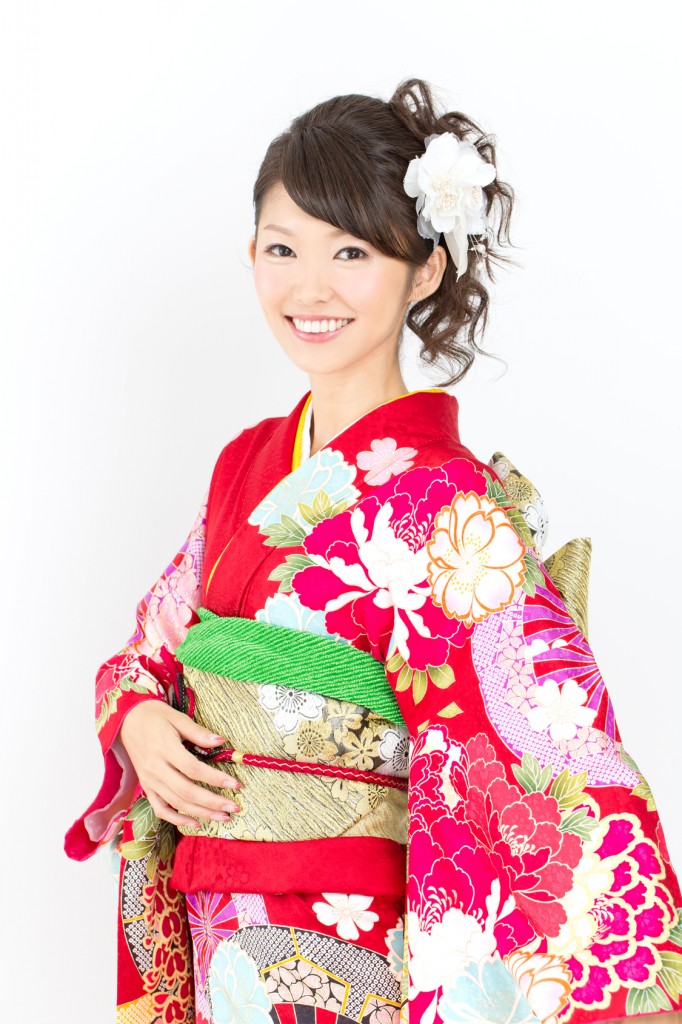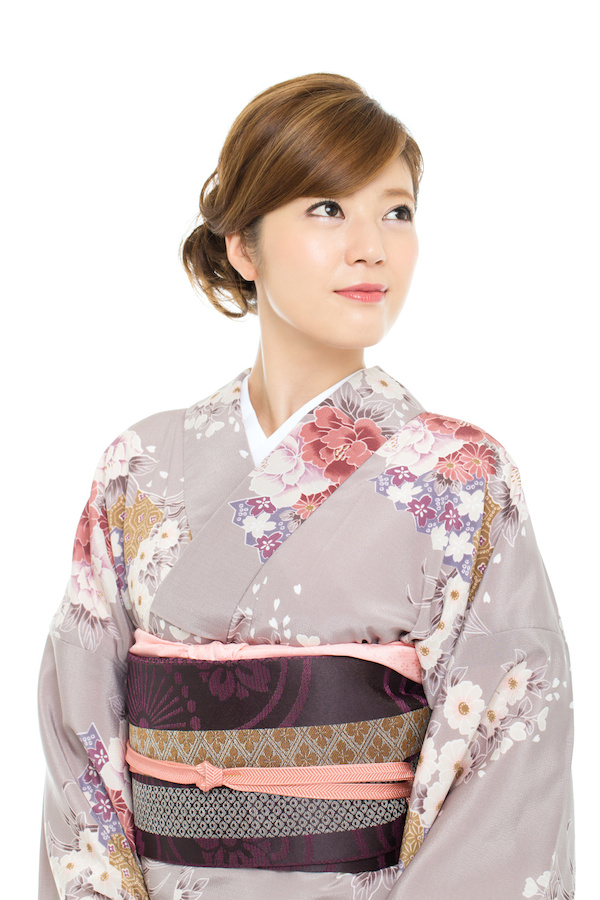
Neckpiece is the collar of the undergarment that is slightly visible from the collar of the kimono. However, this refers to the cloth that is sewed to the collar of the undergarment rather than the collar itself.
The reason that the neckpiece is sewed to the collar of the undergarment is because the collar is the part that becomes dirty most easily. The neckpiece helps washing possible because you only need to remove the separate collar.
Nowadays, it mostly represents the meaning of decoration, and things like embroidered neckpiece that seems impossible to wash are also introduced. White is often used on formal costumes, but it’s not necessarily plain white, white garment sewed with light color thread or garment with beads sewed upon it are also often used.
Especially in the case of furisode, the gorgeously embroidered neckpiece in garish colors are often used. On the contrary, even though the color-patterned neckpiece is often used for casual kimono, there is no problem to use the plain white neckpiece at all.
It’s a tradition to show the neckpiece mostly in formal but not casual occassions, but if the color-patterned neckpiece is suitable for casual occasion, it’s considered a good thing to make the neckpiece stand out and visible in many cases.

